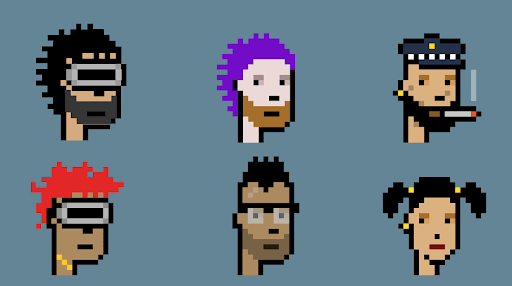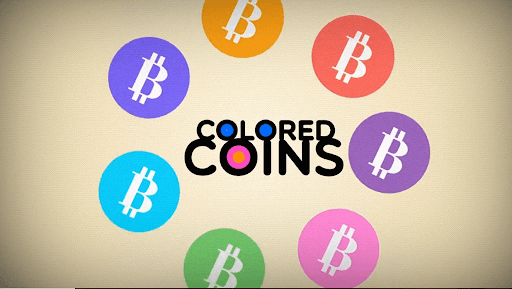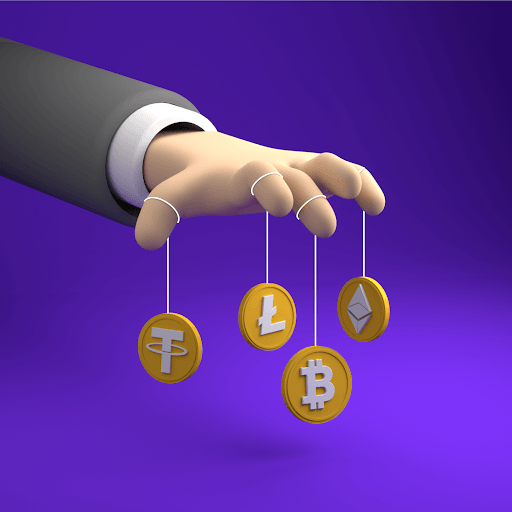Crypto Beginner Series EP 10: Making Sense of NFTs
Somehow, someway, unsuspecting and mostly innocent digital images of mammals, rocks, roses, tweets, and collages managed to garner millions of dollars in sales individually. On their own, these digitally scarce assets are currently selling for millions of dollars apiece in Ethereum.
On the low-end of this high-end spectrum is CryptoPunk #4156 that sold for 650 ETH or $1.25 million. The high end includes Beeple’s Everydays – The First 5000 Days collection which sold for a mind-blowing $69 million dollars. Not all NFTs sell for exorbitant amounts. By now, there are probably millions of them, the majority of which are digital junk. Since anyone can mint an NFT, only the highly collectible ones have amounted to a high value. This blog however will be an exploration of how some NFTs made headlines with price tags in the millions.

How do NFTs Work?
In some ways, NFTs behave similarly to the Bitcoin, Ethereum, and Litecoin you own. But they also have their own set of properties. Fungible means replaceable or interchangeable. The cryptocurrency you purchase on Coinbase or Binance is fungible. If you and I swapped an equal number of Bitcoins, we would still have the same amount of value in our wallets. A Bitcoin or any fungible token has an agreed-upon market value; it is equal to itself. If we swapped NFTs, we would no longer be in possession of equivalent amounts of value following the swap because no two NFTs are alike. Hence the name non-fungible.
What Even are NFTs?
NFTs can represent anything from mortgage deeds, to memes, to music files, and everything else under the sun. Since no two NFTs are alike, owning an NFT brings exclusive rights to that asset. Rather than owning a print or duplicate, your NFT represents absolute ownership. In the art world, this is known as provenance, and it becomes extremely important the pricier the piece of art. A collector’s worst nightmare is finding out some of the art in their collection isn’t original. NFTs solve this.
One of the major criticisms NFTs receive is that they can just be screenshotted and put on display. This perspective lacks a fundamental understanding of scarce assets and ownership. Museum travelers love to take photos of the work on display, but their photograph has no monetary value – only the art itself does.
Origins
Before we can discuss how memes, mammals, rocks, and pixel cartoons started selling for millions of dollars, we have to rewind to the first iteration of NFTs, colored coins. NFTs, as we know them today, are almost entirely living on the Ethereum blockchain, but the idea originated in Bitcoin’s code. A 2012 Bitcoin blog post from Yoni Assia wrote about the possibility of a new currency that can be built on top of the Bitcoin blockchain, calling them “Colored Coins.”
Yoni wrote, “creating an economy of bitcoin 2.x, multiple currencies easily created by any community and deriving its value from the community and protected and secured by all communities.”
Unfortunately, the idea failed due to Bitcoin’s lack of malleability and the system was only as strong as the weakest member. Read here for an early overview of the concept.
Fast-forward a couple of years, and the NFT experimentation of Bitcoin migrated to a more friendly programmable blockchain, Ethereum. Simultaneously, the rise of meme culture coincided well with Ethereum’s gain in popularity in 2017. This resulted in comedic Pepe the Frog images being the focal point of early NFT development. Tech-savvy artists began to realize there was a new way to create their art that guaranteed provenance.
Two men, in particular, had a grand vision. John Watkinson and Matt Hall algorithmically generated their 10,000 CryptoPunk NFTs through computer code on the Ethereum blockchain. No two punks were the same – the outcome was a game-changer. Along the same lines of fun and creative art, CryptoKitties arrived a few months later with another innovation. These NFTs were interactive, so much so in 2017 that the entire Ethereum blockchain slowed down from the congestion of digital cats.
NFTs Today
From 2017 to today, the meme culture around NFTs grew and so too did the asset class. Slowly and steadily, NFTs transitioned from being a fringe novelty collectible to a full-time trade/opportunity/investment for many major participants in and out of the crypto space. Alongside crypto enthusiasts, we have now seen celebrities, athletes, and Visa in the weeds, participating in the craze. There was a time when the news of an NFT selling for $100,000 was a really big deal. Now shelling out +$1,000,000 is the standard for a rare NFT. But how could this be?
NFTs are a new medium of art. If you think of them as only a digital penguin, punk, or rock, you are failing to see the forest through the trees. Think back to the first cave paintings, Greek sculptures, pottery work, or self-portraits. These originals may not be the most aesthetically pleasing pieces of art to look at, but they tell a story of our humanity and creativity that is priceless. NFTs are the next step in the evolution of art. They are a new mode, medium, and style that carry with them a story of decentralization, 21st-century technology, meme culture and blockchain bundled up into art. Not every day does humanity stumble upon a new expression of art. So, of course, the original NFTs are going to have value. That being said, not all of the value in the NFT market is honest, let’s look at an example.
Value
There is reasonable speculation that a lot of the NFT sales seen in the NFT space are disingenuous and represent wash trading.
As a thought experiment, let’s say I own a Cryptopunk, and it is currently worth 10 Ethereum. This is the fair market value that I purchased it for and it has been trading at. In theory, I could call up my friend and ask him to “purchase” the punk from me for 20 Ethereum, so everyone on the marketplace can see it was bought at that price. My friend though actually has no intention of owning the punk. I plan to give back his Ethereum in a little bit of time. I call up another friend and tell him to purchase the same punk for 50 Ethereum.
None of us have any intentions of buying/selling the asset, we are just creating a false sense of interest. We hope a sucker swoops in and buys the NFT because of the artificial interest we have now created around it. We then return the Ethereum we transferred amongst ourselves and split up the profit.
Again, this is a thought experiment. If you do this, it is illegal. You will get in trouble. There is no way to predict how much wash trading has happened in the NFT market, but the conditions are ripe considering NFTs are digital, public, and popular.
Like all markets, NFTs will continue to fluctuate up and down in value but will likely withstand the test of time. With the onset of this new asset class, both you and I have the blessing to participate and/or watch it unfold. Don’t take this blog as a reason to go slam the buy button, because most of these pieces of “art” will still go to $0. Take this blog as a reason to appreciate and enjoy the opportunity.
If you enjoyed this deep dive into NFTs and want another deep dive into another facet of the crypto space, you should consider if Mining Stocks Are Right For Your Investment Portfolio.


